The Design Miami fair is maximalist, colourful — and provocative
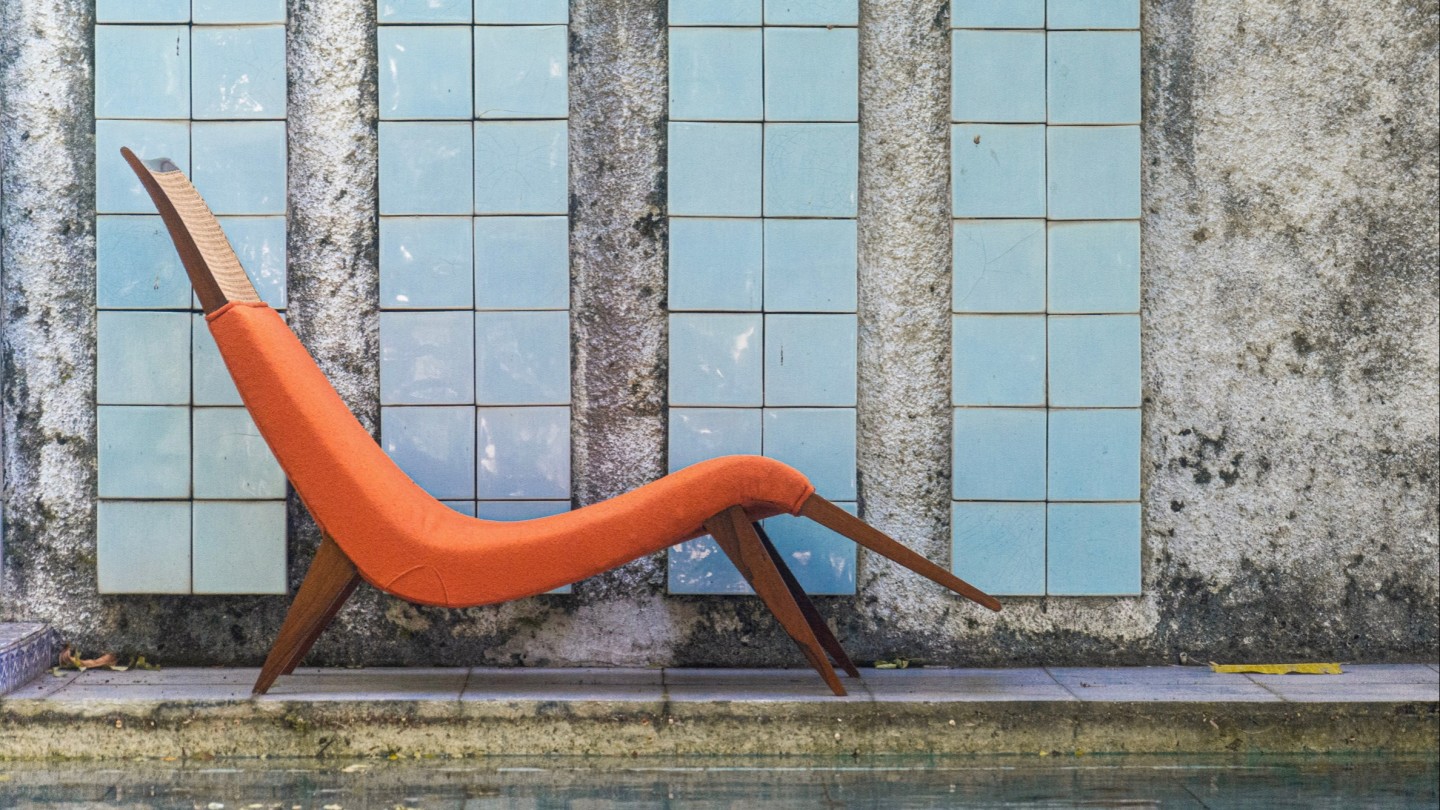
Roula Khalaf, Editor of the FT, selects her favourite stories in this weekly newsletter.
Two weeks before Design Miami opens its doors to VIPs on November 29, Rudy Weissenberg of AGO projects has crates packed with furniture and objets, ready to be shipped from his gallery in Mexico City. AGO is the only Latin American contemporary gallery to take part in the fair, but for Weissenberg it’s the most obvious place to be.
“Design Miami feels younger and more experimental than other fairs, and in line with our objectives at AGO,” says Weissenberg. “It has evolved into a place where people take risks, which I think we’re doing to an extent.”
Weissenberg, who is from Guatemala, opened the space in Mexico City in 2019 with his partner, Rodman Primack, who was Design Miami’s executive director between 2014 and 2019. Their aim is to work with local designers and mine the possibilities of Mexico’s small workshops and factories. “You can get anything made here,” says Weissenberg.
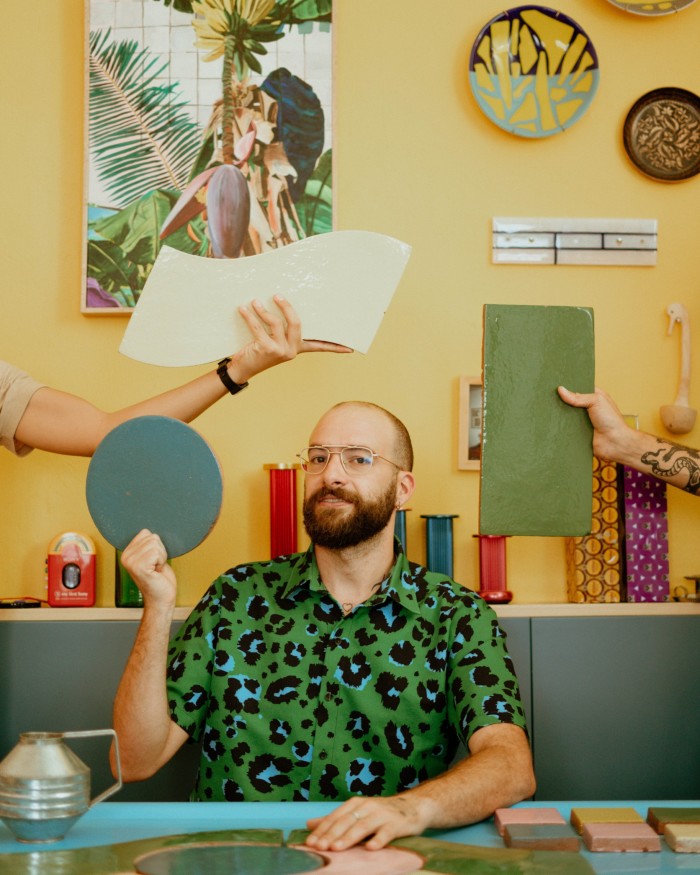
In the AGO crates are designs by Fabien Cappello, French but a resident of Guadalajara in Mexico, who has created candy-coloured tile-topped tables with a company which once supplied mosaics to Mexico’s modernist masters. In a collaborative project with the Guadalajaran company Cerámica Suro, known for ambitious collaborations with artists including Jorge Pardo, Cappello has also designed metres of tiles to cover the booth’s walls and floor. “We’re going for full immersion,” says Weissenberg. “There is colour and humour and a little absurdity. We go fully maximalist in Miami. It’s a provocation.”
Over its 18 years, the fair has established a reputation for big, bold energy, and sales to match. “The first time we showed pieces by Chris Schanck and Misha Kahn here, in 2016, we sold out immediately,” says Marc Benda of New York gallery Friedman Benda, referring to two radical American designers. Schanck’s offering was a monster-size table coated in a brilliant metallic finish; Kahn’s, a massive, irregular-shaped cabinet in grass and found glass, made with basket weavers in Swaziland.
“It is about the psychology of the fair,” says Benda. “Collectors come expecting to be blown away by new work. It might be the same clients who come to Basel in June, but here they have a different mindset. They jump right in.” This year, Benda’s booth will include work by Darren Romanelli, who comes from the fashion world and who has been accumulating and upcycling our consumer debris into clothing, and now furniture, for 20 years.
Design Miami’s make-up is more focused on contemporary work, a lot of it completely new. (“No refried beans,” says Benda.) Even galleries such as Philadelphia’s Moderne, specialists in the venerated studio craft of George Nakashima (who died in 1990 and whose rough-edged walnut tables can fetch $300,000), is mixing in fresh pieces by Miriam Carpenter, an alumna of the Nakashima workshop, and the paper-like ceramics of Tomomi Tanaka.
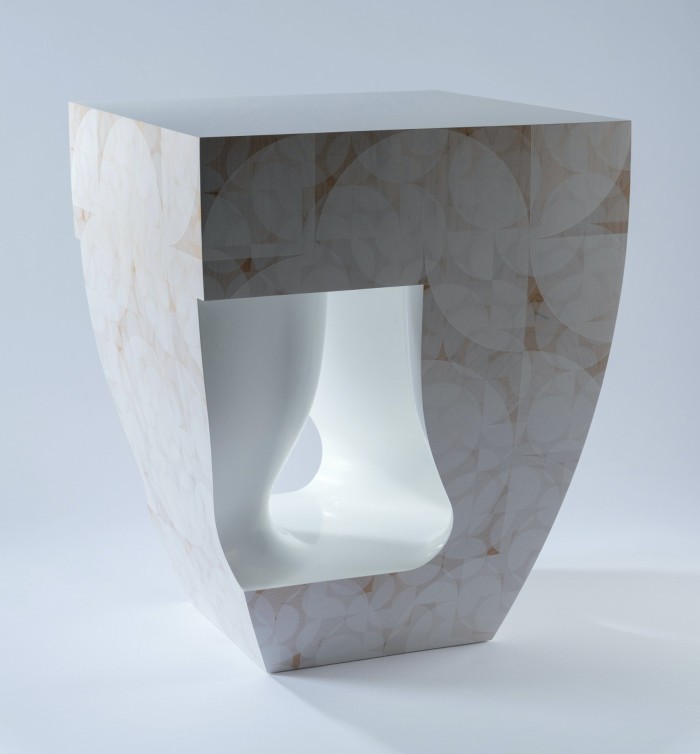
“There are a lot of developers here. A lot of restaurateurs and hoteliers. A lot of second homes,” says the fair’s chief executive, Jen Roberts, suggesting that a local audience helps to cement Design Miami’s viability, along with the international art crowd who flock to town to attend Art Basel and its other fringe fairs. (Up to 40,000 visitors are expected to pass through Design Miami over its six days.)
Khaled El Mays, a 37-year-old designer from Beirut, is presenting his new Lotus series — marble tables on elaborately carved and fluted bases that refer both to ancient Egypt and to Art Deco in their detailing (on show with Milan gallery Nilufar). “They are high-priced pieces, and they need an expansive space, or an outdoor setting,” he says. “They are Miami.”
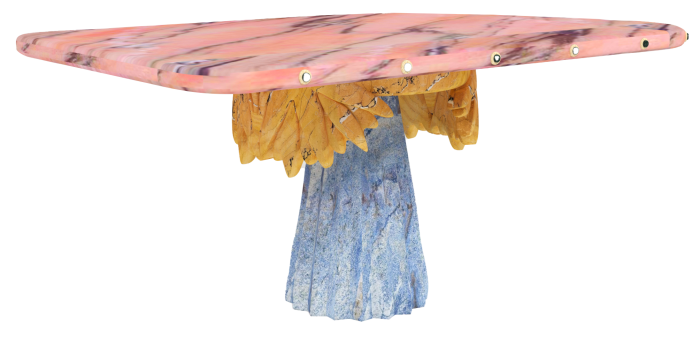
However, Roberts stresses that the fair should be “a platform for a range of voices”. Roberto Lugo, a potter from Philadelphia of Puerto Rican extraction, known for ceramics detailing hip-hop culture and the immigrant experience, is tapping into a rather different side of Miami’s identity. “My father used to own a bodega in Philly,” he says. “And I’m turning the stand at [New York gallery] R+Co into a shop.” More gift store than grocery, Lugo’s shelves will be packed with butter dishes shaped like subway trains, coffee pourers in the form of water towers and pit-bull umbrella stands. “These pieces are a portrait of my working-class community. Ceramics is an interesting and direct medium of communication.”
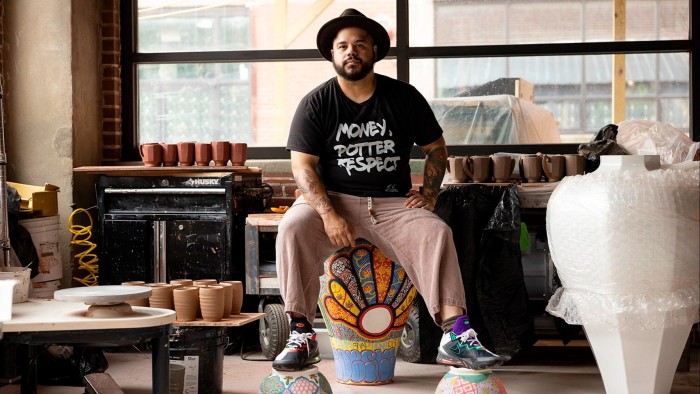
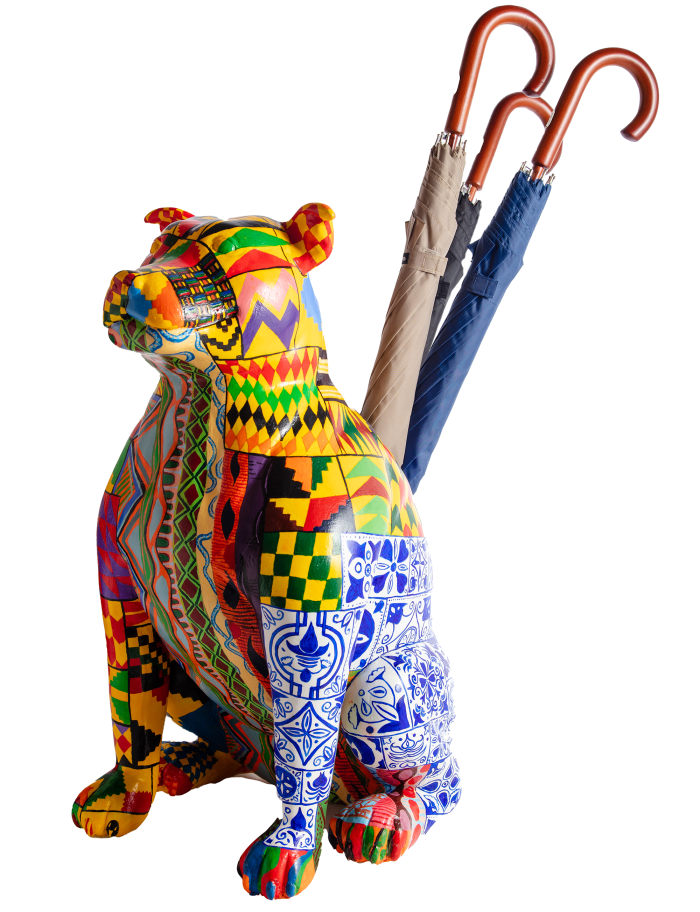
Lugo will also be giving a talk with the musician Erykah Badu, who discovered him through his work. “She saw a sadness in it,” says Lugo. “So we’re going to talk about kintsugi — the Japanese technique of mending pottery with lacquer mixed with powdered gold, where the act of repair is clearly on display. We both see it as metaphor for our own transparency about the struggles we’ve had.”
Karen Grimson is the curator who looks after the art and design collection of Dacra, the real estate company founded by Craig Robins in Miami 35 years ago which was instrumental in the creation of Miami’s Design District. While neither the Design District, with its luxury stores and fancy restaurants, or the fair itself are inclusive of Miami’s broader community, Grimson, who is Argentine, does believe that the make-up of Dacra’s art collection reflects the city’s multicultural nature and an open viewpoint — Robbins made early acquisitions of black, female, queer and Asian artists who are sought-after today. “This city is an eclectic textile of people from all over the US, the Caribbean and Latin America,” she says. “It is political in its porosity and diversity. It does affect what you do here, and how you think.”
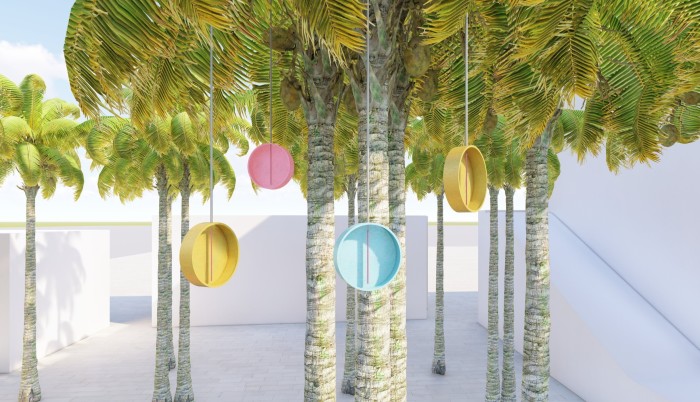
Germane Barnes is the designer charged this year with making the annual fair-time interventions outside the Design Miami tent and throughout the Design District. It is the first time a Miami resident has been given the opportunity and the second time for an African-American designer. “It was important for me to make work rooted in the community that actually built Miami,” says Barnes, an architect and film-maker who is assistant professor of architecture at the University of Miami. He has created brightly coloured sculptures, heaped with foam noodles, that people can climb inside. A 300lb steel rod allows them to rock back and forth.
“This project is a love letter to the city and its people, a tribute to carnival,” says Barnes. “You get in and you look like you’re wearing crazy carnival regalia.” Decorations shaped like steel drums will hang from the trees; a huge disco ball cut in half will function as a stage. “This is for the people,” says the 37-year-old, who is originally from Chicago and whose work explores the value design can bring to civic and domestic space. “You don’t need to know about fancy design or buy a Bottega Veneta handbag to have fun in a rocker, to feel you belong.”
November 30-December 4, designmiami.com
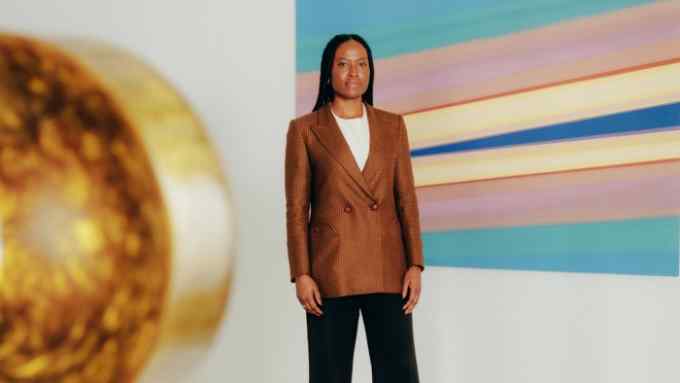
Comments